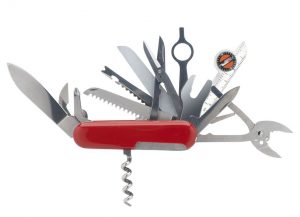Explaining the unusual: Wrestling with checklists
 SortED tablet gives nurses a novel toolkit for initial patient assessment.
SortED tablet gives nurses a novel toolkit for initial patient assessment.
We have, of course, examined performance of most components individually, but now we need to summarise the first ED trial.
Journals these days require that you chose and fill in a checklist which pigeonholes your study neatly into one category or another.
The first question was ‘whose method did you use?’. How do we describe the real method? We assemble a group with widely differing skills and a history of making inventions; we examined the system we want to improve in detail and then began building something novel to improve the current system.
Is it a quantitative or qualitative study? The answer is mainly quantitative, but with qualitative evaluation too: ‘Would nurses rapidly learn and then deploy the app as intended?’. Thankfully, yes they did.
This first observational study on ED patients is part of a quality improvement initiative (for which the SQUIRE checklist is used). However, it has not been like other QIPs. Until SortED tablet is linked to hospital systems we can’t measure any quality improvement effect (such as earlier analgesia administration or reduction in breaches of the 4 hour limit).
At this stage we have had to simulate ‘orders’ for investigations, treatments and procedures which would have been requested at triage and estimate the potential time saving during the patient’s ED stay. So in that respect we have an observational feasibility study and explaining it all will not be a simple check box exercise.
Gillie Francis – Nov 2017


